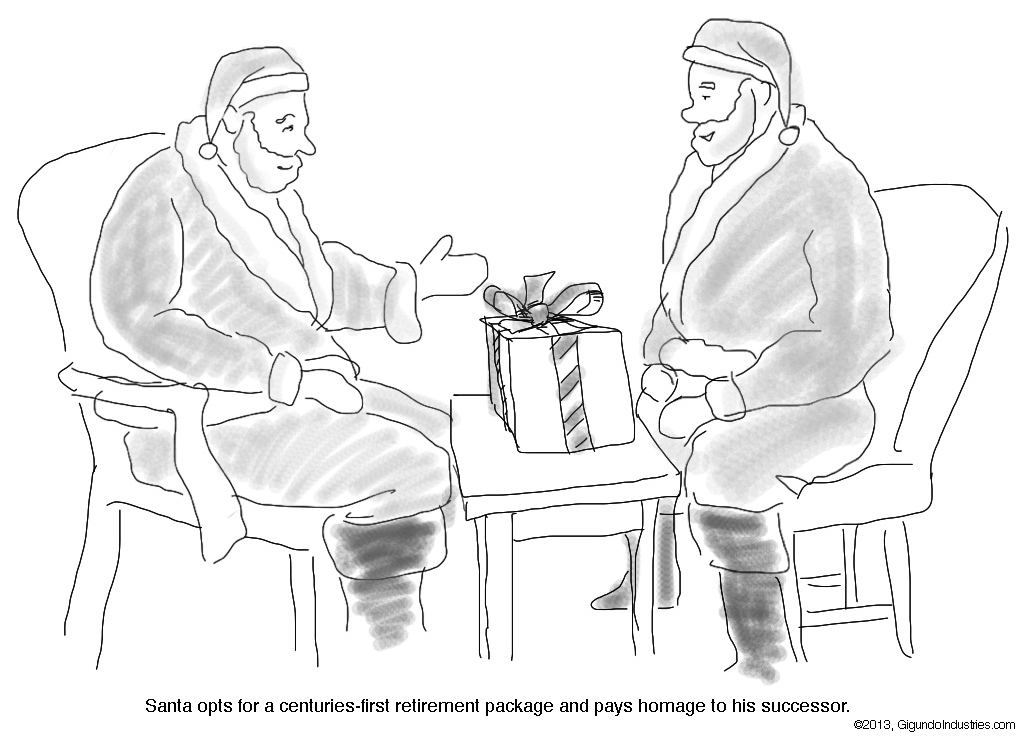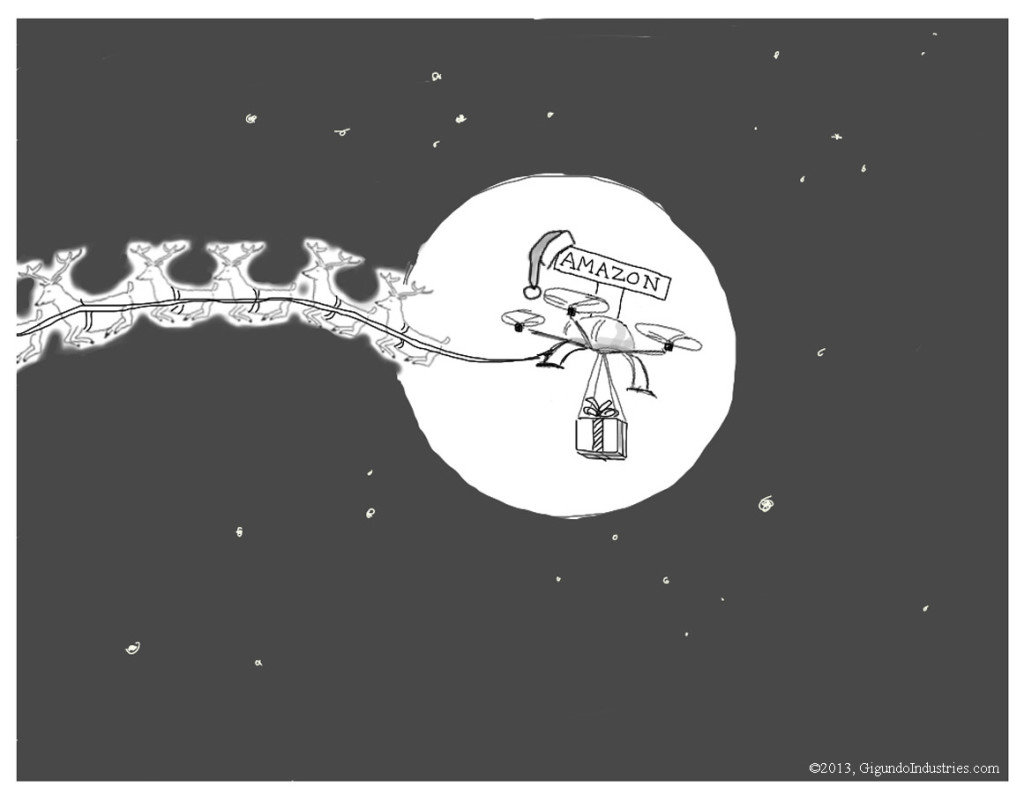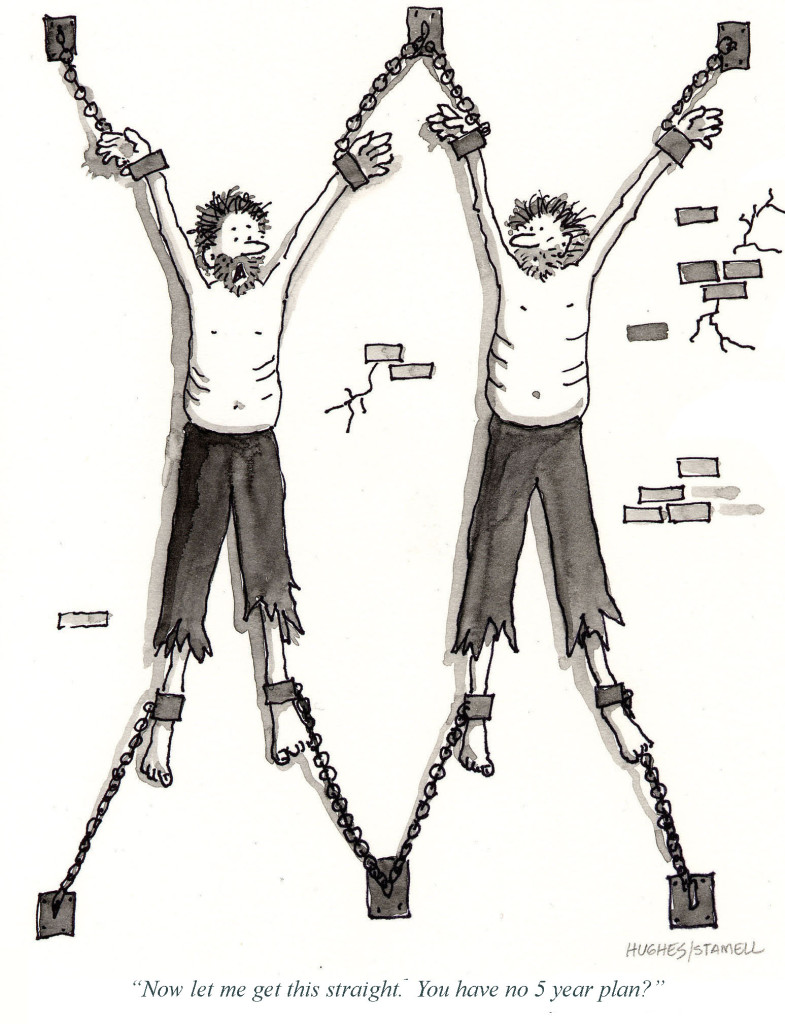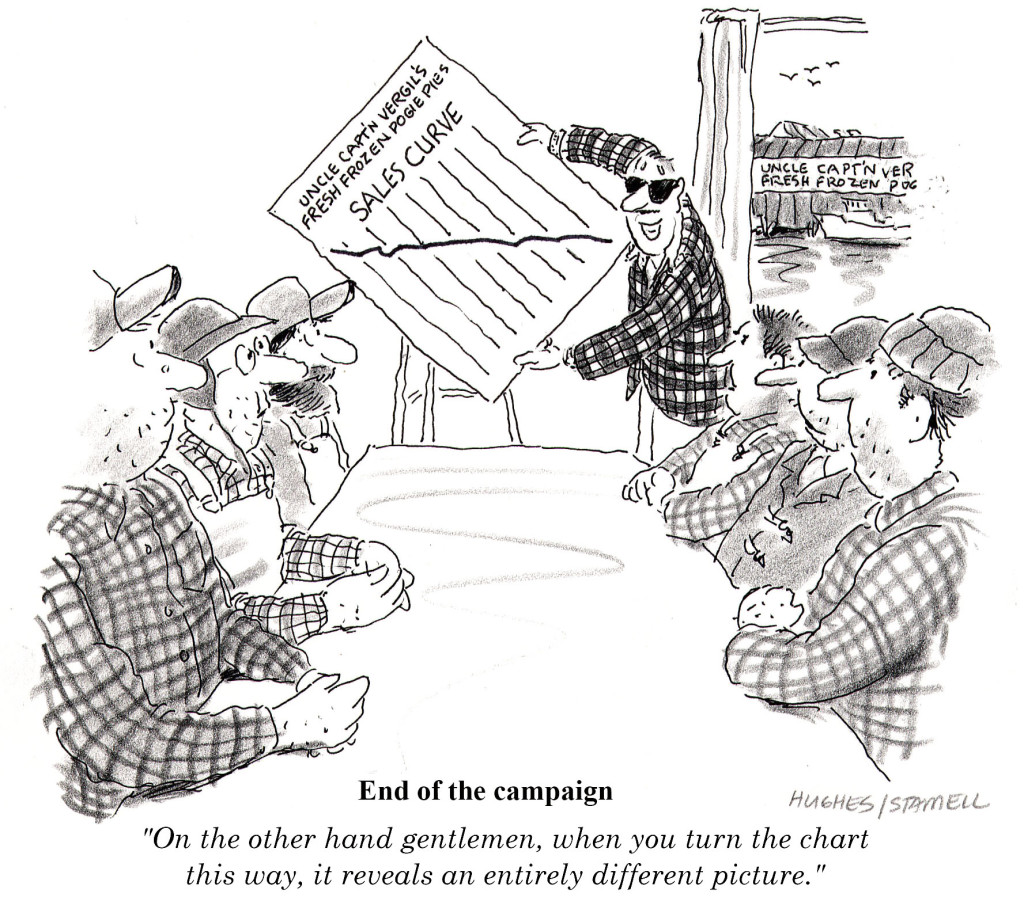There are many reasons companies lose customers but, in the end, they all come down to a lack of customer engagement or advocacy. When engagement drops to a point where customers begin saying this company makes their lives difficult rather than easy, it’s only a matter of time until they go elsewhere. The difficult part for managers hoping to stop the flow is that customer loss is usually a trickle and rarely a cascade. It can be difficult to detect and harder to understand the problem or how to fix it. This is particularly true for consumer facing B2C businesses. B2B companies usually have client managers whose job is to stay on top of things, but the same rules apply and results can take place.
It’s true that general inertia can keep dissatisfied customers patronizing companies they dislike for a long time. It can often seem too difficult or time-consuming to change your service supplier. The hurdles presented in front of change require time to find a new supplier and leave your old one. But inertia only forestalls the loss. It never prevents it because neglect feeds upon itself to a point where customers can feel forced to look elsewhere.
Here are a couple of personal examples: one large one preceded our 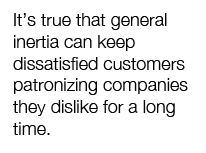 supplier change and one small that validated it. In this case, the industry is banking and companies, such as banks, that are pressured by both small margins and ample regulation are particularly vulnerable.
supplier change and one small that validated it. In this case, the industry is banking and companies, such as banks, that are pressured by both small margins and ample regulation are particularly vulnerable.
For many years, my wife and I banked at HSBC. When we made the decision to go to HSBC, we were somewhat concerned about whether we would get lost in such a large company. It’s the 25th largest bank in the world. But they had a branch only a few blocks away from our home and offices around the world, which could accommodate much of my work, which is outside the U.S.
The bank immediately provided financing for our home in New York and a vacation home in Maine. The branch personnel were always accommodating and all was good for a period of several years. Then, HSBC began to make changes and from an outside view, it seemed they were outsourcing many of their in-house services to cut costs. Service bureaus began to answer phone calls or deal with problems, many of which were not connected to each other. There was no single view of the customer. Decisions moved further away from the branch to be centralized by policy makers who were guided by lawyers. The bank would probably blame government regulation but part of succeeding in business is maintaining excellent customer relations regardless of what is thrown at you from the outside. The old saying, “Don’t make your problems into your customer’s problems” always holds true.
One day about five years ago, the local mortgage officer, always accommodating, called to say that we could refinance our mortgages at lower rates and reduce our monthly payments – a good example of trying to make things easier for the customer. There was some documentation, he said, but that it would be easy because he would shepherd it through. So we filled out the application, paid the documentation fees, authorized appraisals, credit reports and income checks. Then, came the bad news. We had been declined. It made no sense to our local mortgage officer. We had never missed a payment, had near perfect credit scores and growing businesses. Additionally, the bank had all our personal and business accounts, personal and business loans and investments. They owned us.
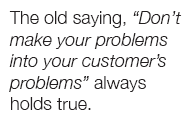 But then he said, “Let me see if I can get my managers to overrule the underwriter.” That sounded odd to me and it turned out that the bank had farmed out its underwriting to a third-party firm that specializes in credit analysis, or more correctly, they had computers that specialized in credit analysis. He called his boss and I called his bosses boss, all to no avail. I spoke to the underwriter who told me that we didn’t fit their formulas because we owned small businesses that couldn’t be counted on to continue to grow. I reminded her that the bank already had our loans so it wasn’t as if turning us down was going to do anything. She said, “I wouldn’t have approved you last time either.”
But then he said, “Let me see if I can get my managers to overrule the underwriter.” That sounded odd to me and it turned out that the bank had farmed out its underwriting to a third-party firm that specializes in credit analysis, or more correctly, they had computers that specialized in credit analysis. He called his boss and I called his bosses boss, all to no avail. I spoke to the underwriter who told me that we didn’t fit their formulas because we owned small businesses that couldn’t be counted on to continue to grow. I reminded her that the bank already had our loans so it wasn’t as if turning us down was going to do anything. She said, “I wouldn’t have approved you last time either.”
To make a long story short, we finally got the refinanced loans approved but only because we refused to let it die and kept pushing the decision up to the highest levels we could find in New York. It was painful and not only took much of our time to make our case but also that of our local loan officer, so in the end the bank’s cost to make the loan was higher and it also took time away from us to devote to other areas, maybe like making more money to satisfy the underwriter.
(Now, I should add that we’re not financial slouches and I’m not looking for sympathy. Remember, customer alienation is the point and there are millions of small business people just like us all across the country.)
For us, the experience was the coup de grace in our relationship with HSBC. We decided that we would leave them at the first opportune time. Several years later, we did after rearranging some of our finances. The irony was that as soon as we did, HSBC desperately wanted us to stay. But all of the equity that their local branch personnel had built by being so accommodating had melted away and we had crossed the line from engagement to alienation.
That’s the big example that caused them to lose us as customers and while I’m using my own examples, I’ve heard similar stories among many of our friends who also are small business people. (Years earlier when I had that conversation with the underwriter, I asked her if she would have been happier if I was a manager at Chrysler corporation making several hundred thousand dollars a year. “Of course,” she replied. And I then said, “But Chrysler went bankrupt and I might have lost my job.” The conversation simply went downhill from there.)
So, we’re now at a point where we’ve changed banks but still are unwinding things with HSBC. They still have the mortgage on our home in Maine and a checking account from which they are automatically receiving the monthly payment. However, we noticed that they’re continuing to send the monthly bill to our old address, so we called to have them change the address. Simple enough.
They wouldn’t do it unless I wrote them a letter to inform them. “But you’ve verified that I am who I say I am with six questions I answered correctly. Why won’t you take the information over the phone, or online? Why are you forcing me to sit down and write you a letter?”
The reply came from a supervisor as the first customer service person agreed with me and gave up in frustration. “I’m sorry,” he said. “We can only do what HSBC management tells us to do.”
I thought about his wording for a moment. (It pays to have had a mother who was an English teacher.) “Excuse me, you said “HSBC management”. Aren’t you HSBC management?”
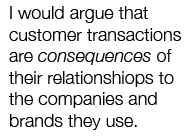 “Technically, no. I’m with a third-party service bureau that has to follow the procedures given to us by HSBC. I agree with you but there is nothing I can do. You have to write a letter,” he said with an air of resignation and defeat.
“Technically, no. I’m with a third-party service bureau that has to follow the procedures given to us by HSBC. I agree with you but there is nothing I can do. You have to write a letter,” he said with an air of resignation and defeat.
So, I thanked him and ended the call and thought again about the axiom, “Don’t make your problems into your customer’s problems.” It was validation for our decision to leave and find a new bank.
How bad can things get when you alienate customers? I’m not advocating that any bank’s customers leave. That was the right decision for us. It may not be for others. However, I am advocating that companies use every opportunity to determine whether their customers are engaged or alienated and why, and if so, what can they do about it. In our CRM (customer relationship management) system world, customers have become a series of transactions that we evaluate with formulas and predict with algorithms. I would argue that the transactions are consequences of their relationships with the companies and brands they use. This makes it essential for companies to devote more resources to both monitoring and measuring those relationships, and doing what they can to improve them.
The same is true internally. Employees are the brand personified. Months into our banking change, I called to speak to an executive at our old bank who had been helpful. I got her assistant who was working on the problem and said what we wanted to do could be done, but wasn’t easy. “Why isn’t anything at that bank easy?” I asked.
“Tell me about it, “ she replied. As the lobsterman, who lives down the road from me in Maine likes to comment, “Nuff said.”
I’d love to hear your comments or stories about successful customer engagement or, conversely, alienation.
Tags: banks, Corporate Myopia, CRM, Customer alienation, Customer engagement, Customer relations, Customers, HSBC, Outcomes
 questions to and you’ve opened up your market research provider’s survey builder to create the survey. You may have done it dozens of times before; that is, begun a research project knowing that what you’ll get back is a group of conclusions about your group and segments of your group, which may be by any combination of demographic criteria.
questions to and you’ve opened up your market research provider’s survey builder to create the survey. You may have done it dozens of times before; that is, begun a research project knowing that what you’ll get back is a group of conclusions about your group and segments of your group, which may be by any combination of demographic criteria.








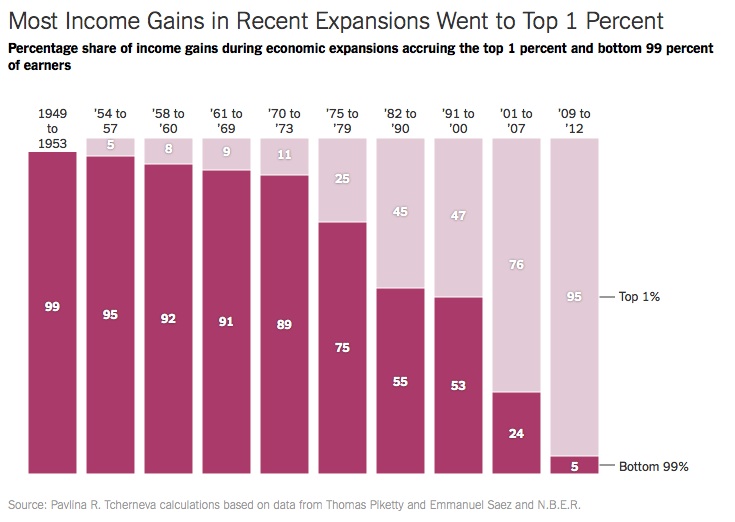


 At its core, this is all about determining what a state or country’s marketing strategy is because slogans, if they have any purpose at all, should tell us why that place is worth our patronage for business, tourism or simply, aspirations. Anyone who pays attention to strategy knows that it must tell us why the product is both distinct and different from any other, and if that strategy is not true to what’s being delivered, it is totally meaningless. Slogans, however, have become a tactic conjured up by advertising or public relations agencies without a thought to strategy and that’s why they are incomprehensible and instantly forgettable.
At its core, this is all about determining what a state or country’s marketing strategy is because slogans, if they have any purpose at all, should tell us why that place is worth our patronage for business, tourism or simply, aspirations. Anyone who pays attention to strategy knows that it must tell us why the product is both distinct and different from any other, and if that strategy is not true to what’s being delivered, it is totally meaningless. Slogans, however, have become a tactic conjured up by advertising or public relations agencies without a thought to strategy and that’s why they are incomprehensible and instantly forgettable.

